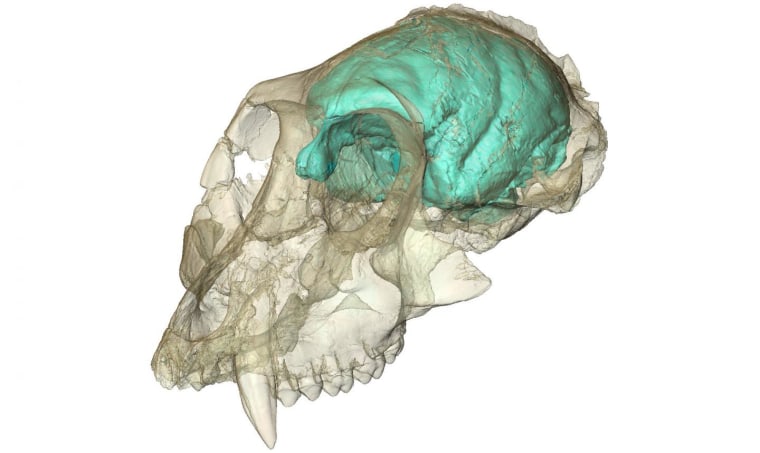Scientists uncovered a few surprises hidden in a 15-million-year-old monkey skull thanks to 3-D computer imaging.
They were examining Victoriapithecus, an ancient Old World monkey, a family of primates that includes baboons and macaques. The skull was found in 1997 on an island in Lake Victoria in Kenya.

Using high-resolution X-ray imaging, researchers from Duke University and the Max Planck Institute for Evolutionary Anthropology created a 3-D model of the monkey's brain.
It turns out Victoriapithecus had a brain that was about half the size of those of modern monkeys. Researchers also found a surprising level of complexity, thanks to the brain's numerous wrinkles and folds.
It also had an olfactory bulb that was about three times larger than expected, indicating that Victoriapithecus might have had a better sense of smell than monkeys that are alive today.
The study was published on Friday in the journal Nature Communications.
"In the part of the primate family tree that includes apes and humans, the thinking is that brains got bigger and then they get more folded and complex," Lauren Gonzales, co-author of the study, said in a statement. "But this study is some of the hardest proof that in monkeys, the order of events was reversed — complexity came first and bigger brains came later."
